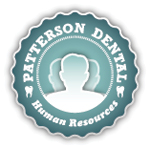Most of our days are consumed by problem solving and decision making. We encounter problems at work and in our personal lives. It could be a problem with a co-worker, a project, a family member, a customer, or a patient. When we are confronted with a problem, the tendency is to solve our problems with what we know best and that would be “whatever has worked before”. Unfortunately, not all problems are the same and need to be seen differently.This is a great reason to have an organized process to problem solving so we are able to determine what the best resolution will be.
In order to solve a problem and make a decision on a resolution, we should follow this simple process.
1. Outline the problem
Think of the “5 W’s” (Who, What, When, Where and Why). It is crucial to have all the pertinent information before making any decisions. Asking the appropriate questions and listening attentively to the answers will help identify a specific response or resolution to the problem.
2. Determine potential resolutions
Essentially, you are brainstorming ideas. What will work and what will not work? Write them down and list reasons why you should choose it. Try to have at least 2-3 so you can make a good decision.
3. Select the resolution that fits best
Weigh your options. As you make your selection, you will need to determine if it is a temporary solution or one that will make a long-term impact.
4. Follow up
Following up on a solution is extremely important. It is the link between the problem and moving forward.
Getting accustomed to this new approach takes time, but it is worth it. Having a process for problem solving will help you stay on track, give you a sense of order, and offer information to assist you as you make your final decision. What process do you use for problem solving?



